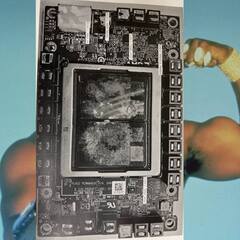-
Posts
123 -
Joined
Reputation Activity
-
 Cree340 reacted to igormp in How fast is the LTT member's internet connection?
Cree340 reacted to igormp in How fast is the LTT member's internet connection?
I've been analyzing my internet for the past couple months, taking regular tests every half an hour. So far I've collected 5157 samples, which amounts to around 107 days of metrics.
Without further ado, here are my results:
Download speed histogram:
Upload speed histogram:
Ping histogram:
Average download speed by hour:
That 80Mbps line is the minimum my ISP is allowed to offer me by law. I'm happy to see they're far above that.
It's nice to see how the speeds dwell a bit during the night, which I suspect is due to my family watching netflix and whatnot. Another thing to notice is how it never reaches the 200Mbps that I pay for, most likely due to my QoS settings on my router.
Average upload speed by hour:
Average ping latency by hour (in log scale):
That's my favourite graph because you can easily see when my ISP usually resets my dynamic IP.
-
 Cree340 got a reaction from Brian Furious in How fast is the LTT member's internet connection?
Cree340 got a reaction from Brian Furious in How fast is the LTT member's internet connection?
Nope, that's a legitimate speedtest result. It isn't from my home though.
-
 Cree340 got a reaction from Brian Furious in How fast is the LTT member's internet connection?
Cree340 got a reaction from Brian Furious in How fast is the LTT member's internet connection?
Apparently Speedtest.net now actually saves the result on speedtests that go beyond several gbps in speed. And I've found a speedtest server that can handle more than 10Gbps (AT&T in Seattle). All the other servers in the region are capped right below 10Gbps at best. So here's a result with a download speed of 17.8Gbps and 4.8Gbps for upload.
https://www.speedtest.net/result/c/7a2916bd-73ef-4ac7-ab1d-7726c72fb1c0
-
 Cree340 reacted to DF0024 in Floatplane
Cree340 reacted to DF0024 in Floatplane
Since the shutdown of Vessel, the foundation of the Floatplane initiative has three years to figure everything out. I think it's time for a former way of communication and a roadmap of the website. Losing the access to the forum without any sort warning or message is kinda rude and rough for the long time supporter ?
And there is no official way to contact the floatplane support, so what can i do?
Clearing the cache of my web browser didn't change my lose access to Floatplane Forum.
-
 Cree340 reacted to yolosnail in Floatplane
Cree340 reacted to yolosnail in Floatplane
It was much better through the forum, the only reason I actually visited the site was for the streams.
The thing I liked about Floatplane on the forum was the discussion, the Floatplane comment section isn't the same, it's basically YouTube comments but with less cancer.
If we won't have the forum section anymore then I don't really see a point in continuing paying for Floatplane
-

-

-
 Cree340 got a reaction from robotsalad in Spectrum in Wisconsin Business Internet
Cree340 got a reaction from robotsalad in Spectrum in Wisconsin Business Internet
Yes, those prices are normal for DIA (Dedicated Internet Access) connections. The cost is significantly more because the ISP expects you to utilize the bandwidth you pay for (so it can't oversubscribe to the extent it does for residential or small business connections). In addition, you probably get better customer support, more included IPs, an SLA, flexible billing and plan options (such as being billed by 95th percentile, unmetered or pay as you go), and support for customer BGP advertisements (so you can multi-home with connections from other ISPs and/or use your own provider independent IP space). You will probably notice that DIA connections will commonly use metro Ethernet over fiber instead of the PON based fiber that you get with residential and small business grade fiber (such as AT&T Gigapower, Verizon FiOS, and Google Fiber) which means that your connection to the ISP shouldn't be contended (however, after it reaches the ISP, speeds are no longer guaranteed).
For reference, here's AT&T's list prices (actual prices may vary depending on location): https://www.business.att.com/products/dedicated-internet.html
-
 Cree340 got a reaction from MEDDERX in How fast is the LTT member's internet connection?
Cree340 got a reaction from MEDDERX in How fast is the LTT member's internet connection?
My gigabit internet at home is finally symmetrical. Now I'm waiting for multigigabit to become available for a reasonable price (probably when NG-PON2 rolls out).
-
 Cree340 got a reaction from GazCBG in Network layout showoff
Cree340 got a reaction from GazCBG in Network layout showoff
They still probably rely on 3rd party recursive DNS servers such as Google, OpenDNS/Cisco Umbrella, Cloudflare/1.1.1.1, Quad9, or their ISP's resolver. It's that they also have a local resolver that will cache frequently used DNS queries, allow them to create DNS records for internal uses (like assigning servers with FQDNs or assigning PTR records to RFC1918 IP addresses), and blackhole certain DNS queries for security or ad-blocking purposes (like in the case of Pi-Hole). Other reasons why you won't directly point to external recursive DNS servers might be due to requirements from other network services/applications like Active Directory.
Just so you know, even 3rd party DNS resolvers need to query other DNS servers on the internet when it receives a query that doesn't exist in its cache, having a local DNS server just adds another layer.
-

-
 Cree340 got a reaction from BuckGup in Best Router for Dorm?
Cree340 got a reaction from BuckGup in Best Router for Dorm?
If you're allowed to broadcast your own WiFi, the Ubquiti Unifi nanoHD has pretty decent 5 GHz performance (I don't think you'll use 2.4 GHz in a dorm environment). And then you should get a separate router, something like the Ubiquiti Edgerouter-X will do just fine.
More importantly, you'll probably need figure out what the best WiFi channels are to use. In dense WiFi environments, narrower channels may do better (like 20MHz and 40MHz), and choose channels that are less occupied by interfering wireless APs/routers.
-
 Cree340 got a reaction from beersykins in Best Router for Dorm?
Cree340 got a reaction from beersykins in Best Router for Dorm?
If you're allowed to broadcast your own WiFi, the Ubquiti Unifi nanoHD has pretty decent 5 GHz performance (I don't think you'll use 2.4 GHz in a dorm environment). And then you should get a separate router, something like the Ubiquiti Edgerouter-X will do just fine.
More importantly, you'll probably need figure out what the best WiFi channels are to use. In dense WiFi environments, narrower channels may do better (like 20MHz and 40MHz), and choose channels that are less occupied by interfering wireless APs/routers.
-
 Cree340 got a reaction from DimasRMDO in High ping
Cree340 got a reaction from DimasRMDO in High ping
Your high pings may also be due to un-optimal routing from your ISP or Valve. You might get better results by just switching to a different ISP (one with better peering and less congested transit links).
On a related note, I have access to fiber internet connections from three different ISPs (two are enterprise class and the other is small business internet) and I'm getting really bad performance to eat.valve.net (192.69.96.1). And I'm in Vancouver, which is really close to Seattle. Usually pings to Seattle are 4-7ms for me (pings to Google are just 4ms). Right now, eat.valve.net is getting me between 12ms to 200ms (averages are 30ms, 56ms and 82ms across the three connections). So it looks like Valve is having network performance issues in Seattle (or at least to eat.valve.net). Two of the connections I tested from are with ISPs that have peering with Valve in Seattle, and I'm seeing normal performance of 4.5ms to the Valve's IX border router in Seattle (six1.sea.valve.net), so it could be an internal routing issue with Valve. Maybe try a different server, like Singapore.
-
 Cree340 reacted to Pancake in How fast is the LTT member's internet connection?
Cree340 reacted to Pancake in How fast is the LTT member's internet connection?
Took 13 runs, but here we go
Can't wait for that 95th percentile bill...
-
 Cree340 got a reaction from Sir Asvald in Network layout showoff
Cree340 got a reaction from Sir Asvald in Network layout showoff
I made a number of changes since my last post...
[diagram redacted]
For the most part, connections are 1GbE over copper (however many connections use link aggregation/etherchannel). Except for one of the storage servers, which is connected at 10GbE to the Cisco 3650 using fiber, and most of IOT devices (such as the speakers and bridge devices) and surveillance cameras are on 100mbps links.
The network has 3 primary VLANs; one for management, one for most devices and a third one for guest. It also has another isolated VLAN for testing purposes. I do plan on adding a couple more VLANs in the near future for security purposes. Like a VLAN for the cameras that has no internet access and a VLAN for the phones that is prioritized over the network. Also, the Cisco 3750-X may be a layer 3 switch and has an IP Base license, but it is currently only used as a layer 2 access switch (no routing) for devices powered via POE.
There are also 3 WiFi SSIDs being broadcasted, a (WPA2 Enterprise) SSID for most devices (such as mobiles devices and laptops), a (WPA2 PSK) SSID for IOT devices and a (Open) SSID for Guests. I used to use Cisco ISE as a RADIUS server, NAC and as a captive portal for the guest WiFi, but now I just use Windows NPS and the built in captive portal in the Cisco WLC cause I corrupted the ISE installation by abruptly disconnecting the ESXi host from the NFS share (where the ISE VM was running from).
I only have one relatively small ESXi host at home (E3-1231v3 32GB RAM) because I run the majority of my VMs offsite and use site-to-site VPN tunnels to have those VMs virtually present on my network. The local ESXi host mainly runs a Windows server with active directory replication and a bunch of other random small VMs. The only services that are hosted in my home that are accessible publicly is my Plex server and my OpenVPN server.
Network monitoring is currently only done using PRTG, the Meraki Dashboard, and the Palo Alto Networks firewall WebGUI (and also ssh-ing directly into network switches). I plan on adding others in the future, such as InfluxDB or Prometheus with Grafana and ELK stack. Maybe also an IDS, such as Bro or Suricata. Cisco Stealthwatch would be cool to add but it costs way way too much.
There are also a few network devices in my diagram (like a number of the surveillance cameras and the surveillance server) that have not been set up yet and are just sitting on a desk right now. I plan on having those up soon.
-
 Cree340 got a reaction from Mattias Edeslatt in Network layout showoff
Cree340 got a reaction from Mattias Edeslatt in Network layout showoff
I made a number of changes since my last post...
[diagram redacted]
For the most part, connections are 1GbE over copper (however many connections use link aggregation/etherchannel). Except for one of the storage servers, which is connected at 10GbE to the Cisco 3650 using fiber, and most of IOT devices (such as the speakers and bridge devices) and surveillance cameras are on 100mbps links.
The network has 3 primary VLANs; one for management, one for most devices and a third one for guest. It also has another isolated VLAN for testing purposes. I do plan on adding a couple more VLANs in the near future for security purposes. Like a VLAN for the cameras that has no internet access and a VLAN for the phones that is prioritized over the network. Also, the Cisco 3750-X may be a layer 3 switch and has an IP Base license, but it is currently only used as a layer 2 access switch (no routing) for devices powered via POE.
There are also 3 WiFi SSIDs being broadcasted, a (WPA2 Enterprise) SSID for most devices (such as mobiles devices and laptops), a (WPA2 PSK) SSID for IOT devices and a (Open) SSID for Guests. I used to use Cisco ISE as a RADIUS server, NAC and as a captive portal for the guest WiFi, but now I just use Windows NPS and the built in captive portal in the Cisco WLC cause I corrupted the ISE installation by abruptly disconnecting the ESXi host from the NFS share (where the ISE VM was running from).
I only have one relatively small ESXi host at home (E3-1231v3 32GB RAM) because I run the majority of my VMs offsite and use site-to-site VPN tunnels to have those VMs virtually present on my network. The local ESXi host mainly runs a Windows server with active directory replication and a bunch of other random small VMs. The only services that are hosted in my home that are accessible publicly is my Plex server and my OpenVPN server.
Network monitoring is currently only done using PRTG, the Meraki Dashboard, and the Palo Alto Networks firewall WebGUI (and also ssh-ing directly into network switches). I plan on adding others in the future, such as InfluxDB or Prometheus with Grafana and ELK stack. Maybe also an IDS, such as Bro or Suricata. Cisco Stealthwatch would be cool to add but it costs way way too much.
There are also a few network devices in my diagram (like a number of the surveillance cameras and the surveillance server) that have not been set up yet and are just sitting on a desk right now. I plan on having those up soon.
-
 Cree340 got a reaction from Lurick in Network layout showoff
Cree340 got a reaction from Lurick in Network layout showoff
I made a number of changes since my last post...
[diagram redacted]
For the most part, connections are 1GbE over copper (however many connections use link aggregation/etherchannel). Except for one of the storage servers, which is connected at 10GbE to the Cisco 3650 using fiber, and most of IOT devices (such as the speakers and bridge devices) and surveillance cameras are on 100mbps links.
The network has 3 primary VLANs; one for management, one for most devices and a third one for guest. It also has another isolated VLAN for testing purposes. I do plan on adding a couple more VLANs in the near future for security purposes. Like a VLAN for the cameras that has no internet access and a VLAN for the phones that is prioritized over the network. Also, the Cisco 3750-X may be a layer 3 switch and has an IP Base license, but it is currently only used as a layer 2 access switch (no routing) for devices powered via POE.
There are also 3 WiFi SSIDs being broadcasted, a (WPA2 Enterprise) SSID for most devices (such as mobiles devices and laptops), a (WPA2 PSK) SSID for IOT devices and a (Open) SSID for Guests. I used to use Cisco ISE as a RADIUS server, NAC and as a captive portal for the guest WiFi, but now I just use Windows NPS and the built in captive portal in the Cisco WLC cause I corrupted the ISE installation by abruptly disconnecting the ESXi host from the NFS share (where the ISE VM was running from).
I only have one relatively small ESXi host at home (E3-1231v3 32GB RAM) because I run the majority of my VMs offsite and use site-to-site VPN tunnels to have those VMs virtually present on my network. The local ESXi host mainly runs a Windows server with active directory replication and a bunch of other random small VMs. The only services that are hosted in my home that are accessible publicly is my Plex server and my OpenVPN server.
Network monitoring is currently only done using PRTG, the Meraki Dashboard, and the Palo Alto Networks firewall WebGUI (and also ssh-ing directly into network switches). I plan on adding others in the future, such as InfluxDB or Prometheus with Grafana and ELK stack. Maybe also an IDS, such as Bro or Suricata. Cisco Stealthwatch would be cool to add but it costs way way too much.
There are also a few network devices in my diagram (like a number of the surveillance cameras and the surveillance server) that have not been set up yet and are just sitting on a desk right now. I plan on having those up soon.
-
 Cree340 reacted to Pancake in How fast is the LTT member's internet connection?
Cree340 reacted to Pancake in How fast is the LTT member's internet connection?
IP Transit, I don't actually pay Cogent directly though. I pay for a redundant 10G link and they route it through the best connection at the time
-

-
.png) Cree340 got a reaction from LunaP0n3 in How fast is the LTT member's internet connection?
Cree340 got a reaction from LunaP0n3 in How fast is the LTT member's internet connection?
It seems like after you pass 3gbps on speedtest, the result ID doesn't exist.
Here's another speedtest that was nearly 3gbps: http://www.speedtest.net/result/7039959693
-
 Cree340 reacted to Tech22 in Poll: How would you prefer to pay for the next LTX 2018?
Cree340 reacted to Tech22 in Poll: How would you prefer to pay for the next LTX 2018?
Other: Paypal.
-
.png) Cree340 reacted to GirlFromYonder in Experiences with non-techies
Cree340 reacted to GirlFromYonder in Experiences with non-techies
I found this while listening to the scooby doo theme song on youtube
-
.png) Cree340 got a reaction from 8uhbbhu8 in How fast is the LTT member's internet connection?
Cree340 got a reaction from 8uhbbhu8 in How fast is the LTT member's internet connection?
It seems like after you pass 3gbps on speedtest, the result ID doesn't exist.
Here's another speedtest that was nearly 3gbps: http://www.speedtest.net/result/7039959693
-
 Cree340 reacted to Himommies in Google Pixel 2 XL: A Visual Catastrophe
Cree340 reacted to Himommies in Google Pixel 2 XL: A Visual Catastrophe
Why is this a issue?If it can take good pictures then who cares













